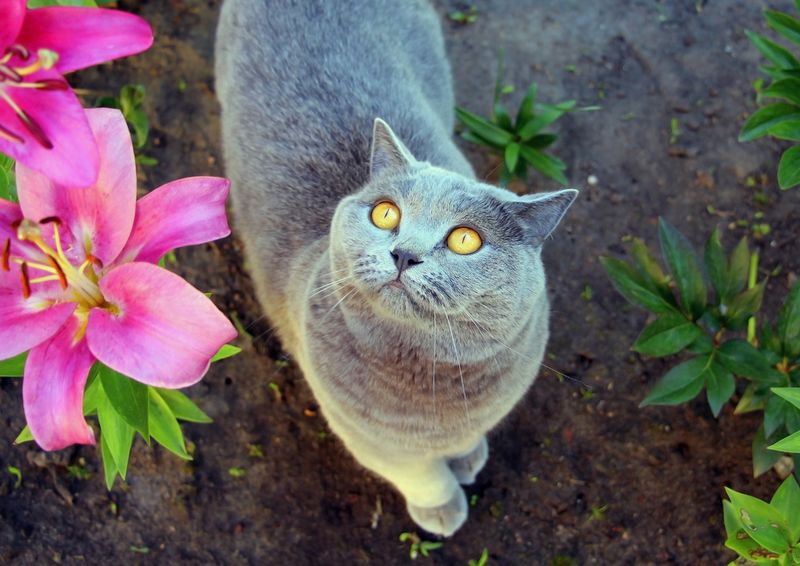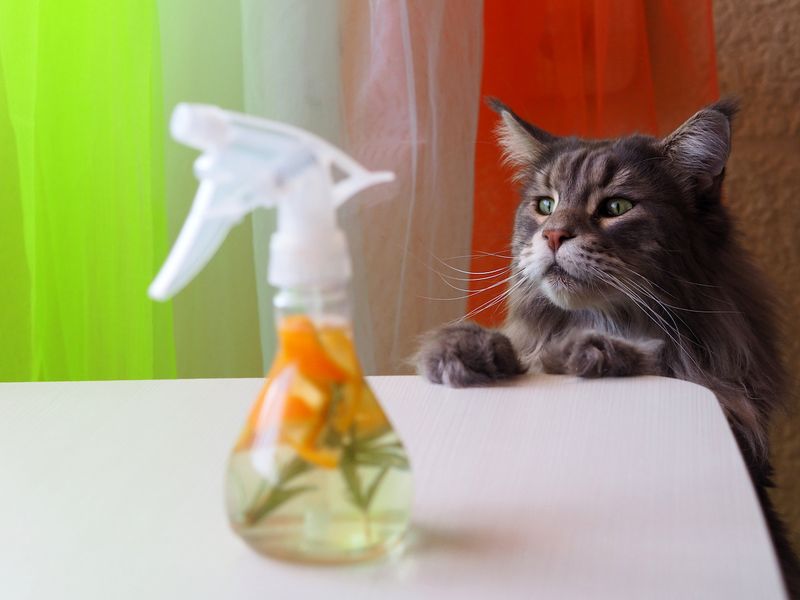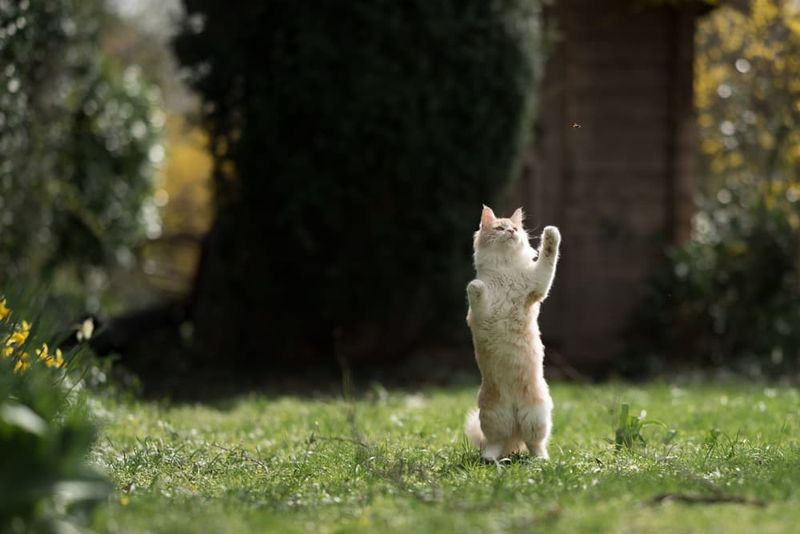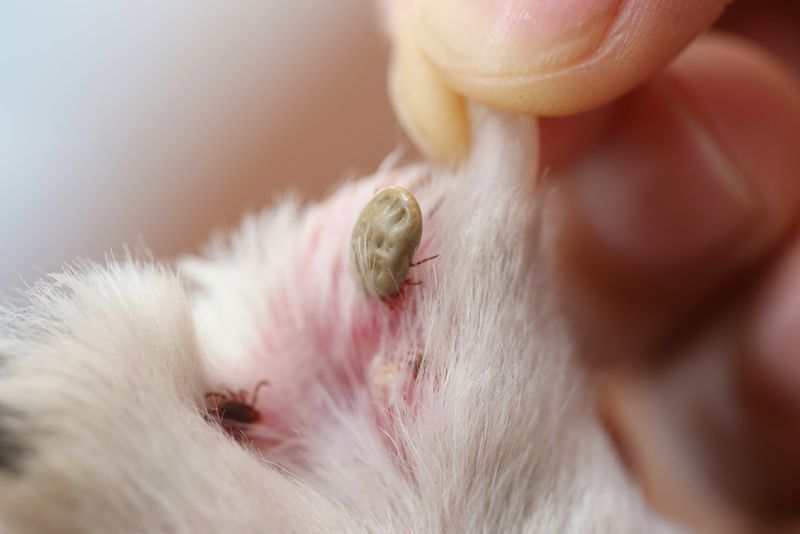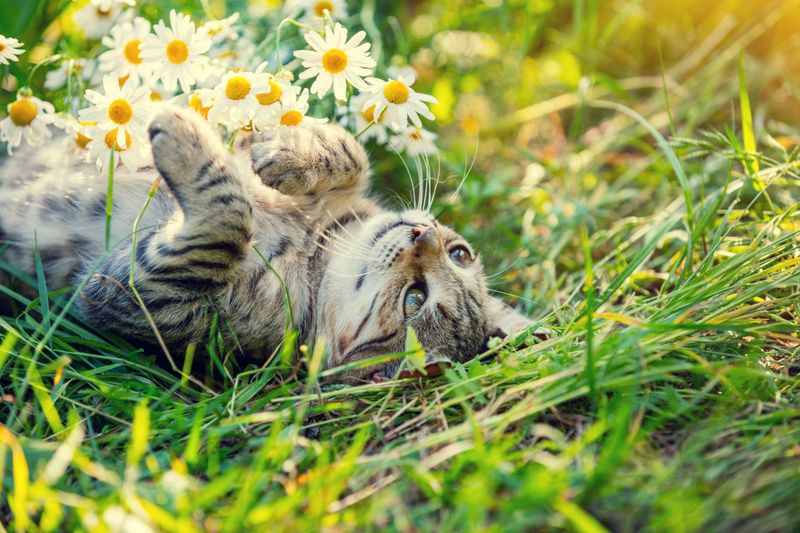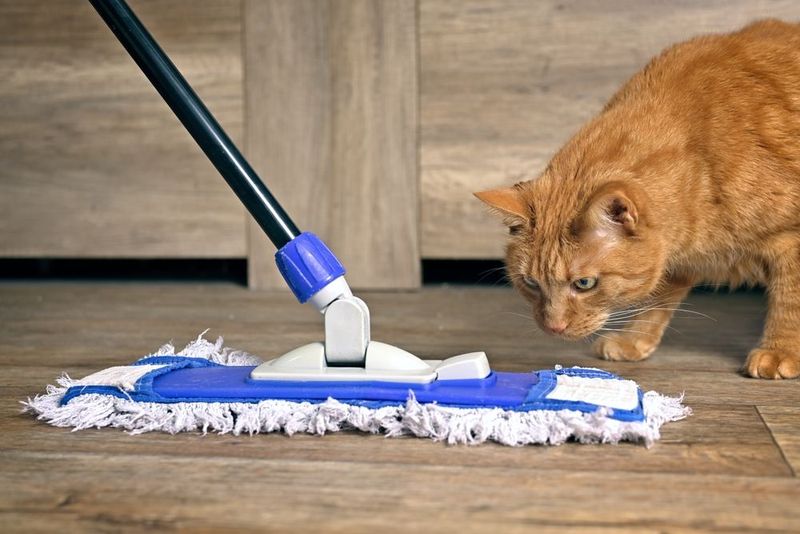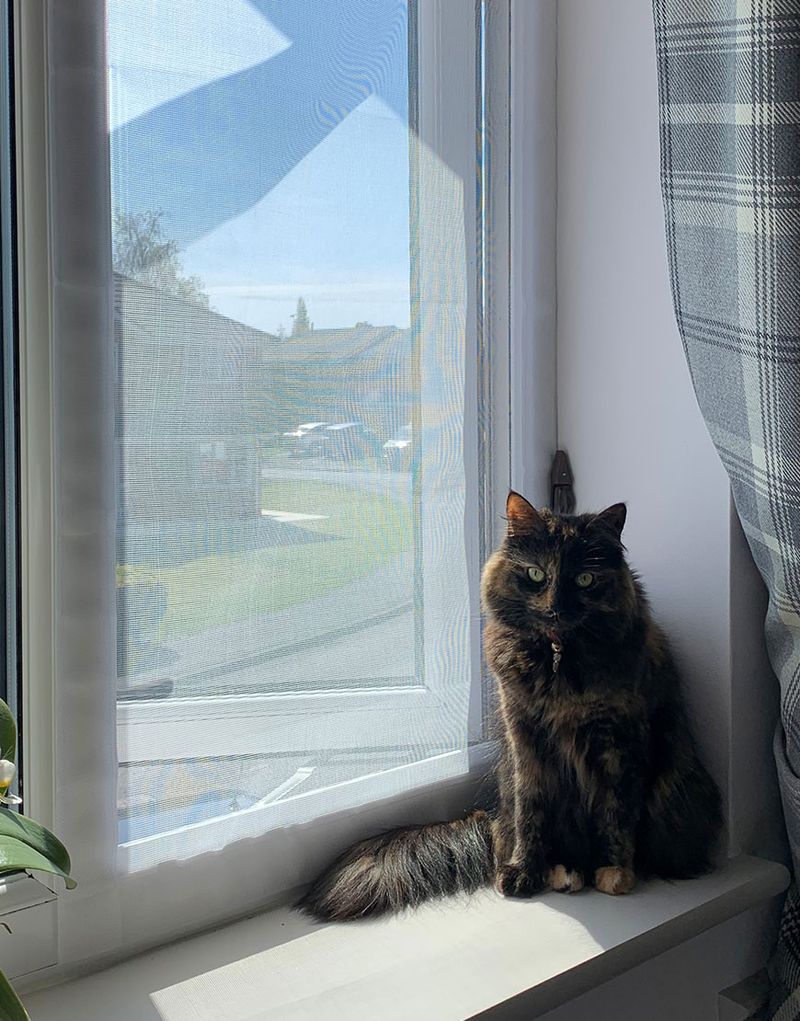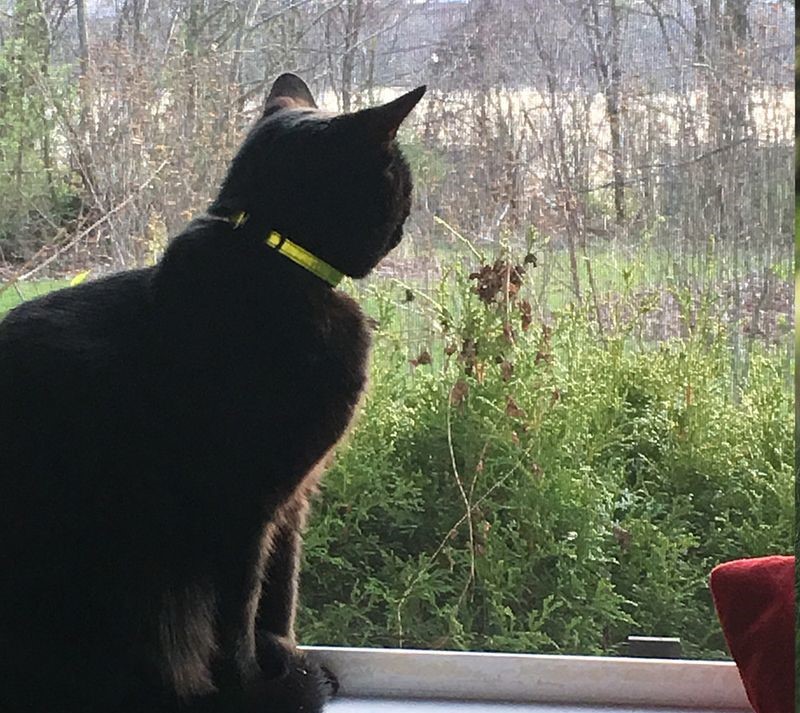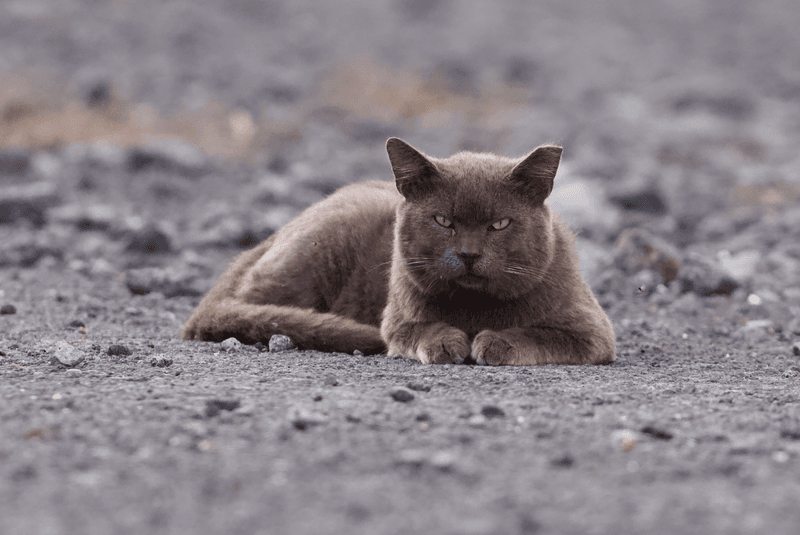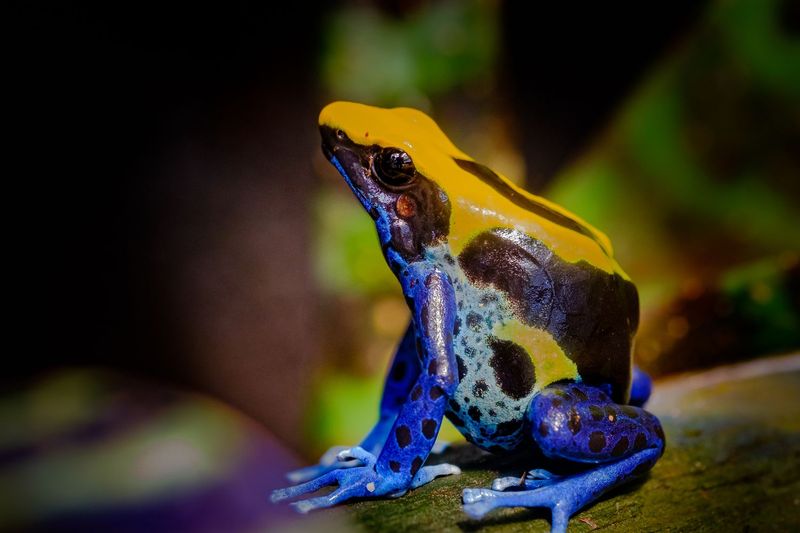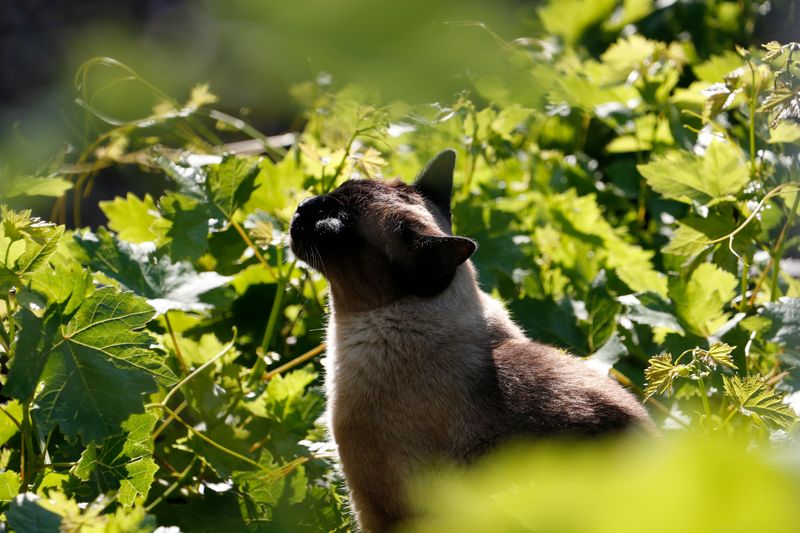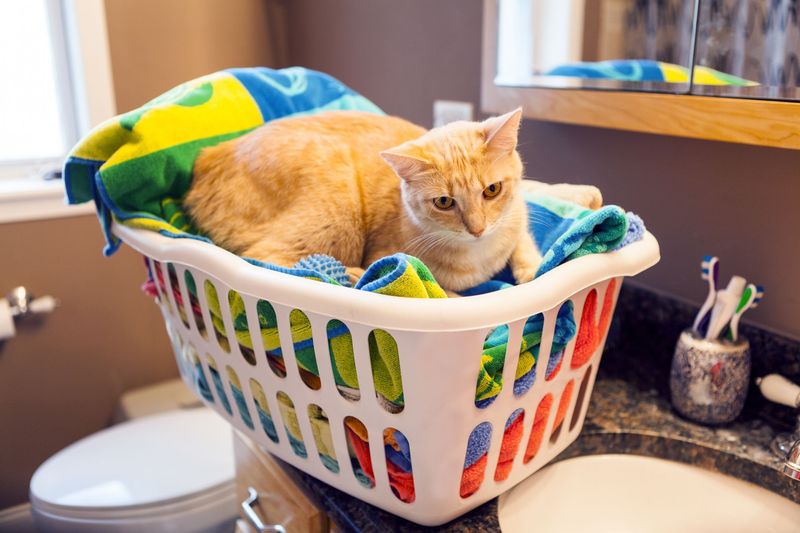📖 Table of Content:
- 1. Toxic Plants (e.g., Lilies)
- 2. Fertilizers and Pesticides
- 3. Bugs and Insects (Including Bee Stings)
- 4. Fleas, Ticks, and Mites
- 5. Allergies
- 6. Household Cleaning Products
- 7. Open Windows Without Screens
- 8. Bird Nesting Season
- 9. Cars and Outdoor Traffic
- 10. Toxic Frogs, Toads, or Snakes
- 11. Springtime Baths and Grooming Products
- 12. Laundry Risks (Especially Dryer Sheets)
Spring is finally here—the sun is shining, the flowers are blooming, and your cat is probably perched in a sunny windowsill, purring like they own the world. While it’s tempting to kick back and let your whiskered sidekick roam and explore, this season isn’t just about butterflies and belly rubs. In fact, some pretty sneaky hazards are lurking right beneath those chirping birds and fresh garden beds.
Cats are curious little explorers with a knack for getting into things they absolutely shouldn’t. As springtime ushers in longer days and open windows, the world becomes one giant playground for your feline friend. Unfortunately, that also means an increase in risks that range from toxic plants to wiggly critters to dangerous cleaning products.
To help you keep your kitty safe (and avoid any emergency vet visits), we’ve rounded up 12 of the most common spring dangers for cats. Each one comes with its own risks and quirks, but don’t worry—we’re here to break it all down in a fun, easy way. Let’s pounce into the list!
1. Toxic Plants (e.g., Lilies)
Nothing says spring quite like a bouquet of fresh flowers on the kitchen table—but not all blooms are kitty-approved. Lilies, in particular, are extremely toxic to cats, and even just brushing against the pollen can spell big trouble. Cats love to nibble on greenery, and that innocent-looking floral arrangement could land them in the emergency room. It’s not just lilies, either—tulips, daffodils, and azaleas also make the no-no list. Every part of these plants—petals, stems, even the water—can be harmful if ingested. Always check a plant’s pet safety rating before bringing it indoors. Opting for cat-safe plants like spider plants or cat grass can satisfy their curiosity without putting their health at risk.
2. Fertilizers and Pesticides
Gardens get a lot of love in spring, but unfortunately, so do the chemicals that help them grow. Fertilizers, herbicides, and pesticides may seem harmless when applied outdoors, but they can cling to paws, fur, or be licked off surfaces. Cats that walk through treated areas or roll around in freshly fertilized grass can absorb toxins quickly. Symptoms of poisoning include vomiting, drooling, seizures, and even collapse in severe cases. Always keep your cat indoors right after you treat your lawn or garden. If you must let them out, consider using pet-safe products and washing their paws when they come back inside. Your greenery will thank you, and so will your cat!
3. Bugs and Insects (Including Bee Stings)
Spring’s buzzing bees and crawling critters may entertain your kitty, but not all insect encounters end well. Cats may paw at wasps or try to eat beetles, unaware of the potential dangers. Bee stings, especially around the face or throat, can cause swelling or allergic reactions that interfere with breathing. Spiders and ants can bite too, and certain species are venomous to pets. While most insect bites result in mild irritation, it’s better to err on the side of caution. Keeping windows screened and inspecting outdoor play areas can help minimize insect run-ins. And if your cat starts limping or swelling after a bug encounter, a quick vet visit is a good idea.
4. Fleas, Ticks, and Mites
Nothing ruins a sunny nap like itchy skin, and parasites are all too eager to hop aboard once the temperature rises. Even if your cat stays mostly indoors, fleas and ticks can catch a ride on shoes, clothing, or other pets. Ticks can transmit serious diseases like Lyme, and fleas cause skin infections, hair loss, and even tapeworms. Regular preventative treatment is key—consult your vet for options that suit your cat’s lifestyle. Checking for ticks after outdoor time is also a smart habit, especially if your kitty explores bushes or tall grass. Scratching, licking, or hair thinning might be the first signs of an infestation. Starting treatment early can save both you and your cat a whole lot of misery.
5. Allergies
Surprisingly, cats can get seasonal allergies just like humans, and spring tends to trigger them with gusto. Airborne pollen, grasses, or mold spores can cause sneezing fits, watery eyes, or itchy skin. Some cats may over-groom in response, leaving bald patches or red, irritated skin. Others might experience ear infections or respiratory issues that require veterinary attention. Watching for changes in grooming habits or new skin irritations can help catch allergies early. Your vet may recommend antihistamines or special diets to ease their symptoms. Keeping windows closed on high-pollen days and using HEPA filters can also make a big difference.
6. Household Cleaning Products
Few things feel more satisfying than a good spring clean, but your mop bucket might be more dangerous than it looks. Bleach, ammonia, and phenol-based cleaners can cause chemical burns, vomiting, or respiratory distress if your cat walks through wet surfaces or licks something they shouldn’t. Even “green” cleaners can contain essential oils like tea tree or eucalyptus, which are toxic to felines. Cats love to investigate new smells, so it’s best to keep them in another room during cleaning. Always read product labels and store all chemicals safely out of reach. After mopping or spraying, make sure floors and surfaces are completely dry before letting your cat roam again.
7. Open Windows Without Screens
Sunny weather practically begs us to open the windows, but this common spring ritual can turn into a disaster for cats. A curious leap or distracted stretch can send your kitty tumbling out an open window—especially in high-rise apartments. While cats are graceful, they’re not invincible, and falls from heights can cause serious injuries or worse. It’s called “high-rise syndrome” for a reason, and it’s more common than you’d think. Before airing out your home, double-check that every window has a sturdy, secure screen. For extra safety, you can also install window guards or only open windows from the top. A fresh breeze isn’t worth the risk of a scary fall.
8. Bird Nesting Season
Nest-building birds are fascinating for cats to watch—but sometimes, too fascinating. The flurry of wings and chirping can tempt your feline into dangerous climbing behavior. If a nest is nearby, your cat might try to scale trees, rooftops, or balconies for a closer look. Beyond the fall risk, this can also disturb the birds and lead to territorial attacks or injuries. Keep bird feeders and nests out of reach, and consider redirecting your cat’s focus with window perches or bird-themed toys. Indoor enrichment like feather wands or laser pointers can provide safe entertainment. After all, bird-watching is fun—when done from a safe distance.
9. Cars and Outdoor Traffic
Warmer weather means more cars on the road and more humans out and about—two things that can be hazardous for roaming cats. Outdoor cats may become more adventurous in spring, exploring farther than usual or crossing busy streets. This increases the risk of car accidents, especially at dusk and dawn when visibility is lower. Collars with reflective material can help if your cat must go outside, but ideally, supervision is safest. Building a catio or leash-training your cat are great alternatives for safe outdoor time. If your kitty is used to coming and going, try limiting their outings to quieter times of day. One close call is one too many.
10. Toxic Frogs, Toads, or Snakes
Depending on where you live, spring may bring slithery or hoppy critters out of hibernation—and some of them are dangerous to cats. Certain toads secrete toxins that can cause foaming at the mouth, vomiting, or even heart issues in felines. Snakes may bite in self-defense, and some bites can be venomous or cause severe swelling. Cats that like to hunt or play with live animals are especially at risk. Watch for unusual behavior after your cat has been outside, like drooling, pawing at the mouth, or sudden lethargy. Keeping your yard clear of brush and monitoring outdoor time helps avoid unwanted encounters. If you’re in a high-risk area, talk to your vet about emergency signs to watch for.
11. Springtime Baths and Grooming Products
A little extra grooming in spring is totally normal—especially as cats shed their winter coats. However, not all shampoos and sprays are feline-friendly, particularly those made for dogs or containing essential oils. Accidentally using the wrong product can cause skin irritation, drooling, or worse if licked off. Always choose cat-specific grooming products, and check the label for anything your vet might warn against. If you’re unsure, a damp cloth or professional groomer is a safer bet. Some cats even enjoy brushing if it’s introduced gently with treats and patience. Keeping your kitty clean should never come at the cost of their safety.
12. Laundry Risks (Especially Dryer Sheets)
Spring wardrobes come with laundry marathons—and more tempting items for your cat to explore. Dryer sheets smell good but contain chemicals that are toxic if chewed or licked. The soft texture and crackly sound can attract curious cats who think it’s a toy. Ingesting even a small piece can cause choking, gastrointestinal blockage, or chemical poisoning. Always store laundry supplies in closed containers and toss used sheets right away. Make sure laundry machines are closed when not in use—some cats love to nap in warm dryers. Keeping laundry spaces cat-free might be the easiest way to prevent accidents altogether.

